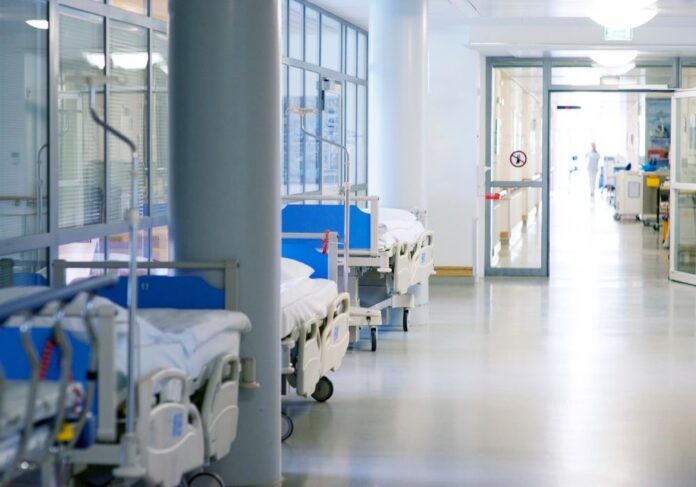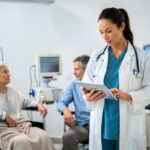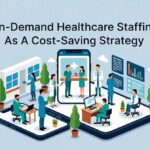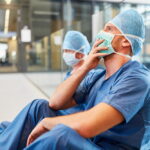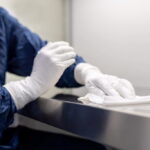Most hospitals and medical facilities have strict cleanliness and maintenance requirements. Here’s why air quality should be included among those priorities.
When you’re running a business that takes care of sick people, how you maintain your facility is incredibly important. Air quality, paint colors, floor and surface cleaners, and traffic flow are just some of the building maintenance issues that can dramatically affect operations. With that in mind, consider why air quality matters in healthcare facilities.
Prevent Disease Spread
The most important reason to maintain the air quality in your building is to help prevent the spread of diseases between patients, staff, and visitors. Poor ventilation, improper purification, and high humidity can make it easy for infectious diseases to spread among people in your facility; therefore, it’s a good idea to know the signs of poor air quality.
Improve Patient Symptoms
Whenever patients are suffering from respiratory conditions, they need access to clean, fresh air to mitigate their symptoms. Poor air quality can actually make patient symptoms worse, which in turn makes them harder to treat and possibly even misleading for medical professionals. To make sure patients get an accurate diagnosis and recover quickly, keep your building’s air quality monitored at all times.
Some of the respiratory conditions that are most affected by poor air quality include:
- Asthma
- Chronic obstructive pulmonary disease (COPD)
- Lung cancer
- Bronchitis
- Laryngitis
- Pneumonia
- Influenza
Protect Expensive Equipment
Another reason why air quality matters in healthcare facilities is because these facilities contain very expensive equipment. Many of these machines are extremely sensitive and are quite costly to replace. Humidity and dust particles can ruin medical equipment, or at least make them less accurate.
Even if you don’t suspect a humidity problem in your building, you can still have a moisture problem if there’s too much dust in the air. Dust actually absorbs moisture, which is then carried to whatever surface it lands on. This makes it much easier for bacteria to grow on your machines.
Prevent Mold
Hospitals have many sinks, toilets, showers, and other damp surfaces where mold loves to grow. With so many rooms, it can be difficult to stay on top of things like mold, which tends to grow in places most people don’t look. Mold itself can be dangerous for healthy people, and even more so when it comes in contact with the infirm.
When people with weakened immune systems encounter mold in their environment, they can develop a mold infection. Sometimes, these infections come from breathing in normal amounts of mold that wouldn’t affect a healthy person, but occasionally it can mean there is a mold problem in the hospital. Always monitor mold infections in patients and investigate if a pattern seems to emerge.
Take Air Quality Seriously
In order to protect your patients, staff, and visitors, you should invest in humidity and air quality control systems and schedule regular HVAC inspections. Doing so will also protect your investment in crucial equipment and sensitive instruments that you wouldn’t want to replace prematurely.
Read Also
- Revolutionizing Patient Engagement: Innovative Solutions for Improved Care and Treatment SuccessNavigating healthcare system can often feel overwhelming for patients. Between appointments, prescriptions, and treatment regimens, it’s easy for crucial details to get lost in the shuffle. That’s why effective patient engagement and support solutions are more important than ever. Companies like Serva Health, with their pharma hub services, are stepping up to ensure that patients… Read more: Revolutionizing Patient Engagement: Innovative Solutions for Improved Care and Treatment Success
- On-Demand Healthcare Staffing As A Cost-Saving StrategyThis is an exciting and challenging time for the healthcare industry. Technology is advancing almost faster than humans can keep pace. New legislation is creating fresh challenges for the future of healthcare, and the shifting population demographic continues to place more pressure on healthcare facilities. Amidst these changes, healthcare facilities are facing a critical staffing… Read more: On-Demand Healthcare Staffing As A Cost-Saving Strategy
- The Benefits of Contract Labor Staffing in HealthcareThe most successful healthcare facilities today aren’t just reacting to crises—they are building workforce resilience to withstand them. Unpredictable patient demand, coupled with persistent nursing shortages, has made the traditional staffing model obsolete. Relying on mandatory overtime to cover a sudden surge in capacity is a recipe for high turnover and rising employee burnout relief… Read more: The Benefits of Contract Labor Staffing in Healthcare
- Management Reinforcement for Healthcare Providers in a Shifting SystemHealthcare is changing faster than ever. So, providers are feeling the pressure to keep up. New technology, changing patient needs, and constant rule updates make it tough for managers to stay on top. Strong leadership helps teams work better, give great care, and stay happy in their jobs. Here’s how healthcare leaders can strengthen their… Read more: Management Reinforcement for Healthcare Providers in a Shifting System
- Why Effective Disinfection Remains the Foundation of Public HealthFrom hospitals and schools to transport hubs and food production sites, disinfection is central to breaking the chain of infection and protecting community health. The COVID-19 pandemic highlighted how crucial surface hygiene and environmental control are in reducing the spread of harmful microorganisms. Yet, beyond emergency response, routine and validated disinfection practices remain the cornerstone… Read more: Why Effective Disinfection Remains the Foundation of Public Health
- How to Navigate Your Medical Assistant Career PathBecoming a medical assistant can feel both exciting and a little stressful. This job lets you work closely with doctors and other healthcare workers to help patients. But with so many different paths to take, it can be hard to know where to start or how to plan your career. Wouldn’t it be nice to… Read more: How to Navigate Your Medical Assistant Career Path
- Benefits of Enrolling in Botox Training CoursesMany people want to enhance their skills in the beauty field, and one way to do that is through Botox training. With the rising popularity of Botox, enrolling in training courses can set you on a path to a rewarding career. If you are considering this option, you might be curious about the benefits that… Read more: Benefits of Enrolling in Botox Training Courses
- How Pilates Certification Enhances Professional Growth in HealthcareAre you looking for a way to expand your skills and stand out in healthcare? Pilates certification can be a powerful step in your professional journey. It not only helps you understand movement and body mechanics. It also gives you tools to support patient recovery. It also improves mobility, and promotes wellness. Ready to see… Read more: How Pilates Certification Enhances Professional Growth in Healthcare

